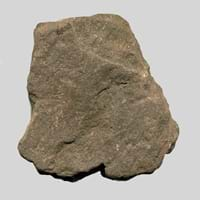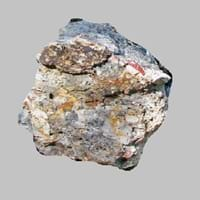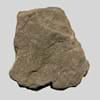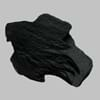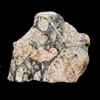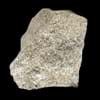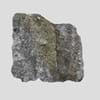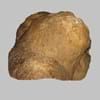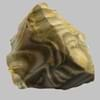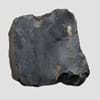Definition
Shale is a fine-grained sedimentary rock which is formed by the compaction of silt and clay-size mineral particles
Novaculite is a dense, hard, fine-grained, siliceous metamorpic rock which is a type of chert that breaks with conchoidal fracture
Discoverer
Unknown
Unknown
Etymology
From German Schalstein laminated limestone, and Schalgebirge layer of stone in stratified rock. From Old English scealu in its base sense of- thing that divides or separate,
From Latin word novacula, for razor stone
Class
Sedimentary Rocks
Sedimentary Rocks
Sub-Class
Durable Rock, Medium Hardness Rock
Durable Rock, Hard Rock
Group
Not Applicable
Not Applicable
Other Categories
Fine Grained Rock, Opaque Rock
Fine Grained Rock, Opaque Rock
Texture
Clastic, Splintery
Banded, Glassy, Rough, Vitreous
Color
Black, Brown, Buff, Green, Grey, Red, Yellow
Black, Brown, Green, Grey, Red, White
Durability
Durable
Durable
Appearance
Muddy
Glassy or Pearly
Interior Uses
Decorative Aggregates, Homes, Interior Decoration
Countertops, Decorative Aggregates, Flooring, Interior Decoration
Exterior Uses
As Building Stone, As Facing Stone, Office Buildings
As Building Stone, Garden Decoration
Other Architectural Uses
Curbing
Curbing
Construction Industry
Cement Manufacture, Construction Aggregate, for Road Aggregate, Making natural cement, Raw material for the manufacture of mortar
Arrowheads, Building houses or walls, Cement Manufacture, Construction Aggregate, Cutting Tool, for Road Aggregate, Knives, Landscaping, Making natural cement, Production of Glass and Ceramics, Rail Track Ballast, Roadstone, Spear Points, Used to sharpen metal tools and weapons
Medical Industry
Not Yet Used
Not Yet Used
Antiquity Uses
Artifacts, Sculpture
Artifacts, Monuments
Commercial Uses
Creating Artwork, Pottery
Cemetery Markers, Gemstone, In aquifers, In fire-starting tools, Jewelry, Manufacture of tools, Pebbles are used in ball mills to grind in ceramics industry, To determine the gold content of jewelry
Types
Red Shale, Black Shale, Green Shale, Grey Shale and Yellow Shale
Not Available
Features
Easily splits into thin plates, Generally rough to touch, Very fine grained rock
Clasts are smooth to touch, Easily splits into thin plates, Has High structural resistance against erosion and climate
Archaeological Significance
Famous Monuments
Jantar Mantar in India
Data Not Available
Sculpture
Used
Not Yet Used
Famous Sculptures
Data Not Available
Not Applicable
Pictographs
Used
Not Used
Petroglyphs
Used
Not Used
Figurines
Used
Not Yet Used
Formation
Shale forms when very fine-grained clay particles are deposited in water which settle at the bottom of water bodies. They are later compacted hence forming shale.
Novaculite forms when microcrystals of silicon dioxide grow within soft sediments that become limestone or chalk. The formation of Novaculite can be either of chemical or biological origin.
Mineral Content
Albite, Biotite, Calcite, Chert, Chlorite, Dolomite, Hematite, Micas, Muscovite or Illite, Pyrite, Quartz, Silica, Sulfides
Quartz, Silicon
Compound Content
Ca, Fe, Mg, Silicon Dioxide, Sodium
Ca, Silicon Dioxide
Types of Metamorphism
Not Applicable
Not Applicable
Types of Weathering
Biological Weathering, Chemical Weathering, Mechanical Weathering
Not Applicable
Types of Erosion
Chemical Erosion, Coastal Erosion, Glacier Erosion
Chemical Erosion, Coastal Erosion, Glacier Erosion
Grain Size
Very fine-grained
Fine Grained
Fracture
Not Available
Conchoidal
Porosity
Highly Porous
Less Porous
Luster
Dull
Waxy and Dull
Cleavage
Slaty
Non-Existent
Specific Gravity
2.2-2.8
2.5-2.7
Transparency
Opaque
Translucent to Opaque
Density
2.4-2.8 g/cm3
2.7 g/cm3
Resistance
Heat Resistant, Impact Resistant
Heat Resistant, Impact Resistant, Pressure Resistant, Wear Resistant
Deposits in Eastern Continents
Asia
Bangladesh, China, India, Russia
China, India, Iran, Japan, Oman, Russia, Saudi Arabia, Taiwan, Thailand, Vietnam
Africa
Ethiopia, Kenya, Morocco, South Africa, Tanzania
Kenya, Morocco, South Africa, Tanzania
Europe
Austria, France, Germany, Greece, Italy, Romania, Scotland, Spain, Switzerland
Austria, France, Greece, Italy, Malta, Poland, Portugal, Serbia, Spain, Sweden, United Kingdom
Others
Not Yet Found
Greenland, Mid-Atlantic Ridge
Deposits in Western Continents
North America
USA
Canada, Mexico, USA
South America
Bolivia, Chile, Colombia, Ecuador, Peru, Venezuela
Bolivia, Brazil
Deposits in Oceania Continent
Australia
New South Wales, New Zealand, Queensland, Victoria, Western Australia
New South Wales, Queensland, South Australia, Western Australia
All about Shale and Novaculite Properties
Know all about Shale and Novaculite properties here. All properties of rocks are important as they define the type of rock and its application. Shale and Novaculite belong to Sedimentary Rocks.Texture of Shale is Clastic, Splintery whereas that of Novaculite is Banded, Glassy, Rough, Vitreous. Shale appears Muddy and Novaculite appears Glassy or Pearly. The luster of Shale is dull while that of Novaculite is waxy and dull. Shale is available in black, brown, buff, green, grey, red, yellow colors whereas Novaculite is available in black, brown, green, grey, red, white colors. The commercial uses of Shale are creating artwork, pottery and that of Novaculite are cemetery markers, gemstone, in aquifers, in fire-starting tools, jewelry, manufacture of tools, pebbles are used in ball mills to grind in ceramics industry, to determine the gold content of jewelry.
